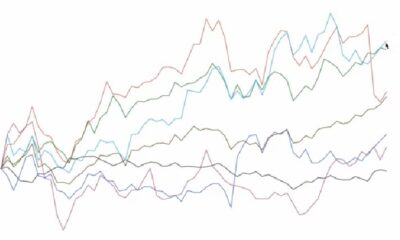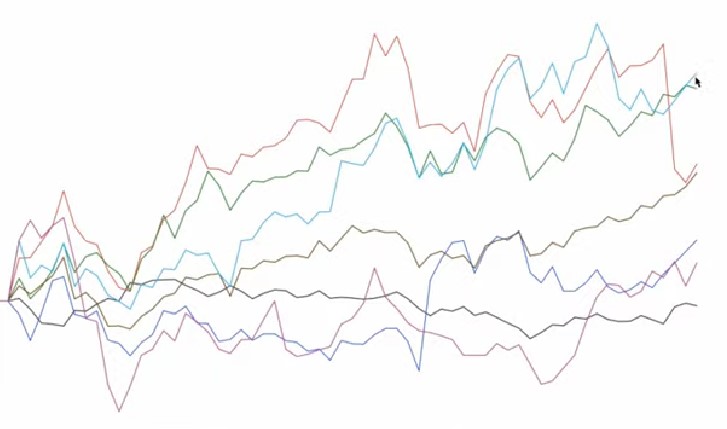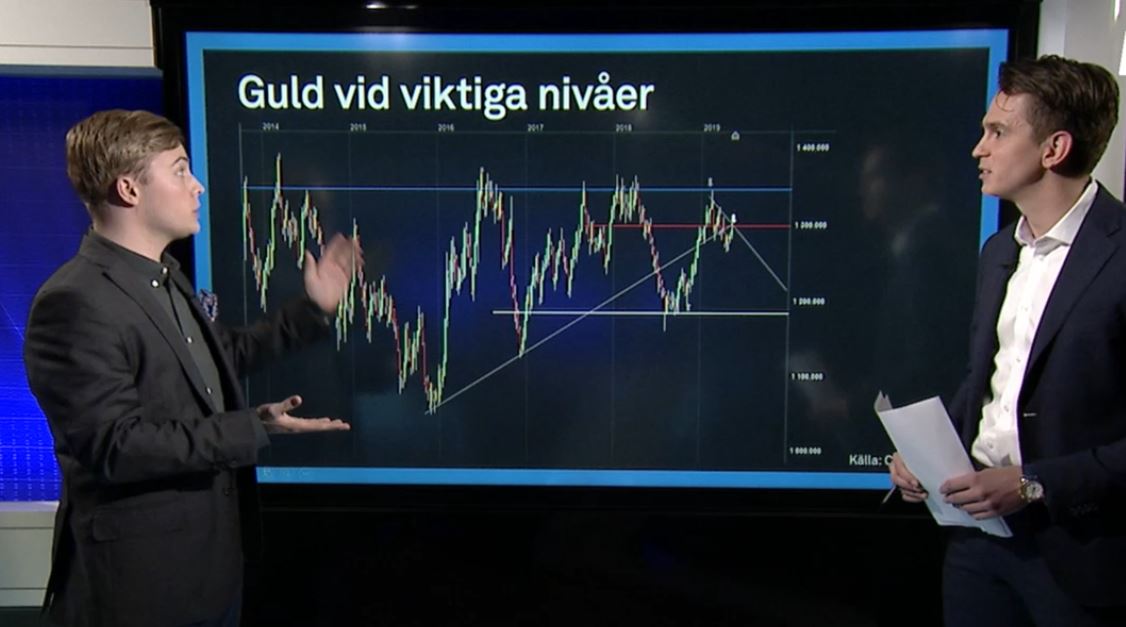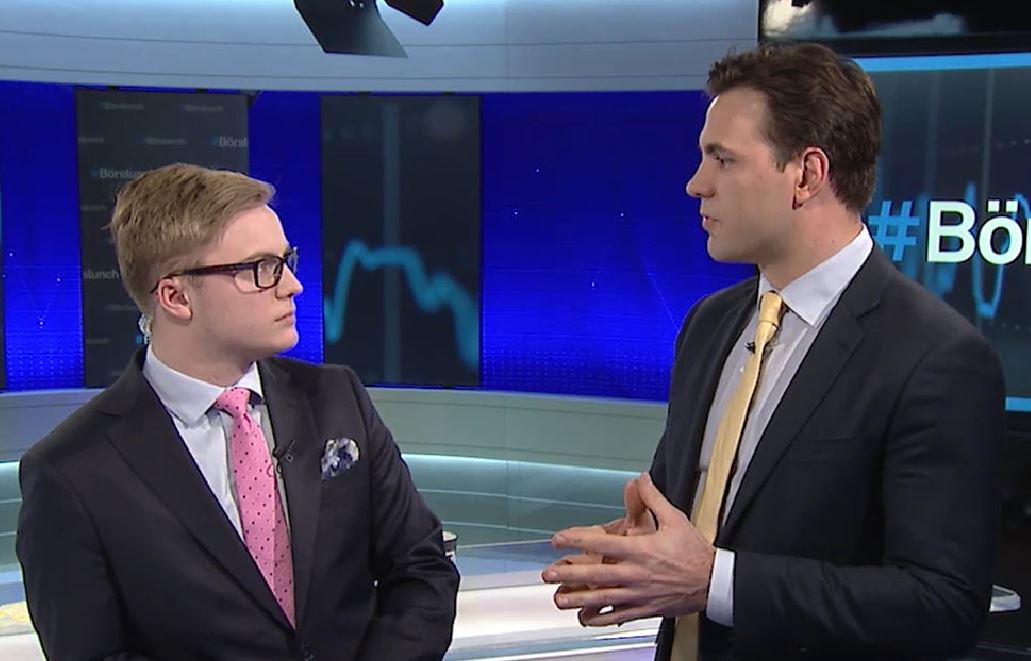Analys från DailyFX
Gold Prices Are Still Bearish; But Very Oversold
To receive James Stanley’s Analysis directly via email, please sign up here.
- Gold Technical Strategy: Bearish, and will likely remain as such until/if we see the Fed soften their stance.
- Gold prices have attempted to establish support since our last article, building a short-term bear-flag; but sellers have remained active, offering prices lower as resistance gets tested.
- For oversold metrics, weekly RSI is at 30 and Daily RSI is below-30; be careful of chasing the trend-lower here.
- If you’re looking for trading ideas, check out our Trading Guides.
In our last article, we looked at the continued down-trend in Gold prices. And as we said, if the bullish thesis for Gold prices hadn’t completely died already; it was on its way. And this is unlikely to change as long the Federal Reserve remains hawkish. Dollar strength has become a pervasive theme, and this will likely persist as the Fed is one of the lone major Central Banks looking at tighter policy options.
Of course, this does come with risks; and we heard Chair Yellen mention those risks last January when she said that un-checked USD-strength could potentially create issues in the American economy as exporters may begin to face pressure in foreign markets. And if the U.S. is one of the few economies actively looking to raise rates, this could expose the Greenback to considerable capital flows; thereby driving the currency even-stronger. But given Chair Yellen’s positivity at the last FOMC meeting, it doesn’t appear that this is a major concern at the moment so we’re probably not yet near an area where the Fed is looking to soften their stance towards rate hikes in 2017, 2018 and 2019. This could continue to drive pressure into Gold prices, so traders would likely want to retain a bearish stance until something in the underlying conditions change.
Now, with that being said, Gold prices are exhibiting tendencies of a deeply over-sold market. The short-term bear-flag with an aggressive up-ward sloping angle (showed up last week, shown below) is indicative of a market that was lacking sellers, at least until resistance came into-play. And while sellers did return when price action approached resistance in the $1,142-$1,144 area, they were scant to be found on the move-higher off of support at $1,122 to $1,142. Perhaps more disconcerting – with so many tests of this area of resistance, how much longer might it hold? This could lead to a ‘blow off’ move that could volley price action-higher, at least temporarily, as sellers relent off of this zone of resistance at $1,142-$1,144.
This means that traders will likely want to be a bit more careful with these short-term resistance swings and, instead, look for a deeper resistance level to plot bearish continuation entries. One such level exists at $1,150, as this is the 23.6% Fibonacci retracement of the May 2013 high to the December 2015 low.
— Written by James Stanley, Strategist for DailyFX.com
To receive James Stanley’s analysis directly via email, please SIGN UP HERE
Contact and follow James on Twitter: @JStanleyFX
Analys från DailyFX
EURUSD Weekly Technical Analysis: New Month, More Weakness
What’s inside:
- EURUSD broke the ‘neckline’ of a bearish ‘head-and-shoulders’ pattern, April trend-line
- Resistance in vicinity of 11825/80 likely to keep a lid on further strength
- Targeting the low to mid-11600s with more selling
Confidence is essential to successful trading, see this new guide – ’Building Confidence in Trading’.
Coming into last week we pointed out the likelihood of finally seeing a resolution of the range EURUSD had been stuck in for the past few weeks, and one of the outcomes we made note of as a possibility was for the triggering of a ’head-and-shoulders’ pattern. Indeed, we saw a break of the ’neckline’ along with a drop below the April trend-line. This led to decent selling before a minor bounce took shape during the latter part of last week.
Looking ahead to next week the euro is set up for further losses as the path of least resistance has turned lower. Looking to a capper on any further strength there is resistance in the 11825-11880 area (old support becomes new resistance). As long as the euro stays below this area a downward bias will remain firmly intact.
Looking lower towards support eyes will be on the August low at 11662 and the 2016 high of 11616, of which the latter just happens to align almost precisely with the measured move target of the ‘head-and-shoulders’ pattern (determined by subtracting the height of the pattern from the neckline).
Bottom line: Shorts look set to have the upperhand as a fresh month gets underway as long as the euro remains capped by resistance. On weakness, we’ll be watching how the euro responds to a drop into support levels.
For a longer-term outlook on EURUSD, check out the just released Q4 Forecast.
EURUSD: Daily
—Written by Paul Robinson, Market Analyst
You can receive Paul’s analysis directly via email bysigning up here.
You can follow Paul on Twitter at@PaulRobinonFX.
Analys från DailyFX
Euro Bias Mixed Heading into October, Q4’17

Why and how do we use IG Client Sentiment in trading? See our guide and real-time data.
EURUSD: Retail trader data shows 37.3% of traders are net-long with the ratio of traders short to long at 1.68 to 1. In fact, traders have remained net-short since Apr 18 when EURUSD traded near 1.07831; price has moved 9.6% higher since then. The number of traders net-long is 15.4% lower than yesterday and 16.4% higher from last week, while the number of traders net-short is 0.4% higher than yesterday and 10.5% lower from last week.
We typically take a contrarian view to crowd sentiment, and the fact traders are net-short suggests EURUSD prices may continue to rise. Positioning is more net-short than yesterday but less net-short from last week. The combination of current sentiment and recent changes gives us a further mixed EURUSD trading bias.
— Written by Christopher Vecchio, CFA, Senior Currency Strategist
To contact Christopher Vecchio, e-mail cvecchio@dailyfx.com
Follow him on Twitter at @CVecchioFX
To be added to Christopher’s e-mail distribution list, please fill out this form
Analys från DailyFX
British Pound Reversal Potential Persists Heading into New Quarter

Why and how do we use IG Client Sentiment in trading? See our guide and real-time data.
GBPUSD: Retail trader data shows 38.2% of traders are net-long with the ratio of traders short to long at 1.62 to 1. In fact, traders have remained net-short since Sep 05 when GBPUSD traded near 1.29615; price has moved 3.4% higher since then. The number of traders net-long is 0.1% higher than yesterday and 13.4% higher from last week, while the number of traders net-short is 10.6% lower than yesterday and 18.3% lower from last week.
We typically take a contrarian view to crowd sentiment, and the fact traders are net-short suggests GBPUSD prices may continue to rise. Yet traders are less net-short than yesterday and compared with last week. Recent changes in sentiment warn that the current GBPUSD price trend may soon reverse lower despite the fact traders remain net-short.
— Written by Christopher Vecchio, CFA, Senior Currency Strategist
To contact Christopher Vecchio, e-mail cvecchio@dailyfx.com
Follow him on Twitter at @CVecchioFX
To be added to Christopher’s e-mail distribution list, please fill out this form
-
Analys från DailyFX10 år ago
EUR/USD Flirts with Monthly Close Under 30 Year Trendline
-
Marknadsnyheter5 år ago
BrainCool AB (publ): erhåller bidrag (grant) om 0,9 MSEK från Vinnova för bolagets projekt inom behandling av covid-19 patienter med hög feber
-

 Marknadsnyheter2 år ago
Marknadsnyheter2 år agoUpptäck de bästa verktygen för att analysera Bitcoin!
-
Analys från DailyFX12 år ago
Japanese Yen Breakout or Fakeout? ZAR/JPY May Provide the Answer
-

 Marknadsnyheter2 år ago
Marknadsnyheter2 år agoDärför föredrar svenska spelare att spela via mobiltelefonen
-
Analys från DailyFX12 år ago
Price & Time: Key Levels to Watch in the Aftermath of NFP
-
Analys från DailyFX8 år ago
Gold Prices Falter at Resistance: Is the Bullish Run Finished?
-
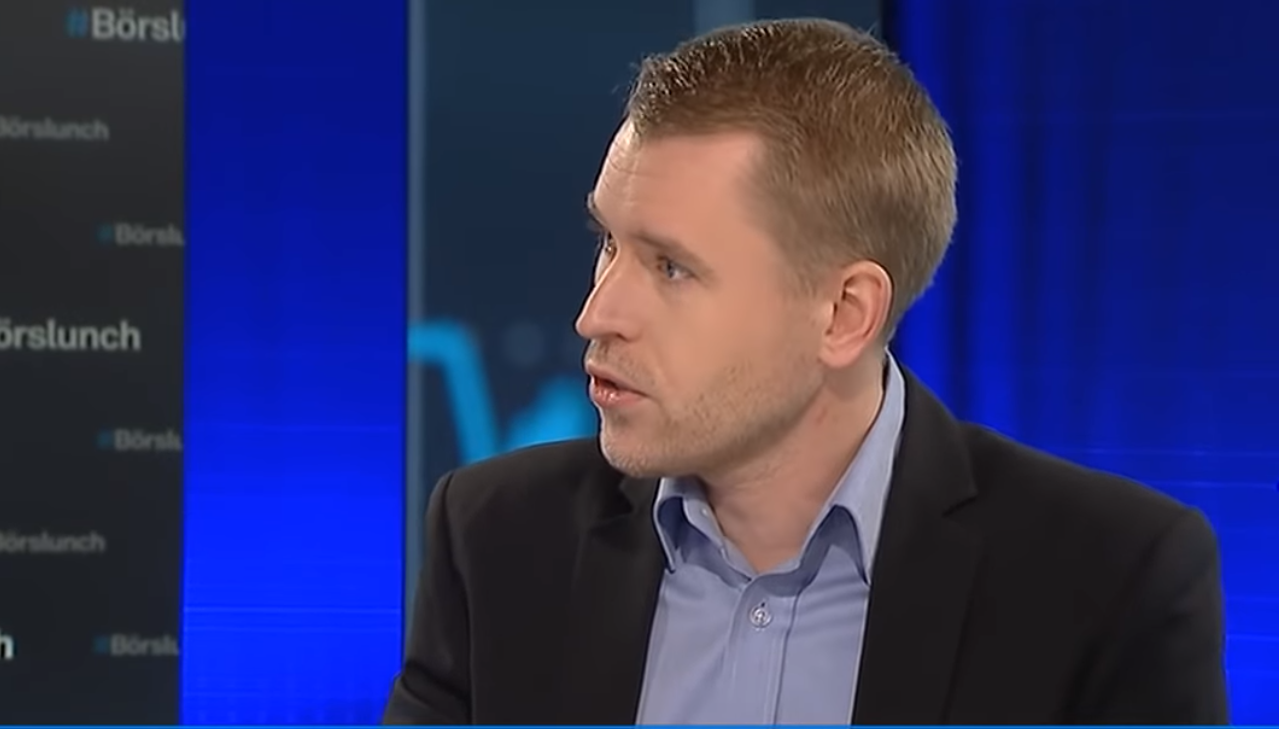
 Nyheter7 år ago
Nyheter7 år agoTeknisk analys med Martin Hallström och Nils Brobacke





